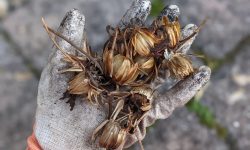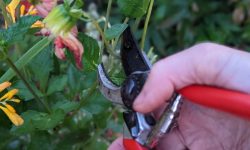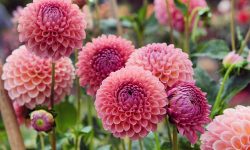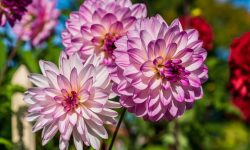When gardeners seek vibrant color that lasts all season, verbena often tops the list. With its delicate blooms and long flowering period, it’s a favorite in borders, containers, and hanging baskets alike. But as you plan your garden year after year, one key question may arise: Is verbena a perennial plant, or will you need to replant it every spring?
The answer depends on your climate, the type of verbena you choose, and how you care for it. In this comprehensive guide, we’ll explore whether verbena returns year after year, how to extend its lifespan, and the best ways to keep it blooming beautifully in your garden for seasons to come.
Understanding the Botanical Background of Verbena

Verbena is a diverse and fascinating genus of flowering plants belonging to the family Verbenaceae. With over 250 species native to both the Americas and Europe, verbena has adapted to a wide range of climates, from tropical lowlands to mountainous regions. The name “verbena” originally referred to sacred plants used in religious rites in ancient Rome, which hints at the long cultural history and botanical significance of the genus.
Botanically, verbena is characterized by its square stems, finely toothed leaves, and dense clusters of small, five-petaled flowers. These flowers often appear in vivid shades of purple, pink, red, blue, and white, attracting pollinators such as butterflies, bees, and hummingbirds. The plant’s growth habit can range from low-growing ground covers to upright clumping forms, depending on the species or cultivar.
Modern gardeners typically encounter two main types of verbena: annual verbenas, often seen in bedding plants and hanging baskets, and perennial verbenas, like Verbena bonariensis or Verbena rigida, which can survive multiple seasons in warmer zones. Despite the differences in their lifecycles, all verbena varieties share a love for full sun, well-draining soil, and minimal fuss—traits that make them especially attractive for both novice and seasoned gardeners.
Understanding the plant’s lineage also helps explain its resilience and popularity. Many verbenas are hybrids, developed to combine the ornamental appeal of annuals with the hardiness of perennials. By learning about the genetic and regional variations of verbena, you’ll be better equipped to choose the right type for your landscape and provide the care it needs to thrive year after year.
Is Verbena a Perennial or Annual Plant?
Factors That Influence Verbena’s Lifespan
Several key factors determine how long verbena will thrive in your garden or containers. The climate zone is one of the most important—verbenas grown in warmer regions are more likely to survive as perennials, while frost-prone areas shorten their lifespan.
Soil conditions also play a crucial role. Verbena prefers well-drained, slightly acidic to neutral soil. Poor drainage can lead to root rot, significantly reducing the plant’s longevity.
Another major influence is sunlight exposure. Verbena requires full sun to stay healthy and blooming; plants grown in shade often become leggy, weak, and short-lived.
Proper watering and pruning habits are equally important. Overwatering can harm the roots, while under-watering can stress the plant. Regular deadheading and light pruning can rejuvenate the plant and encourage it to live and flower longer.
Lastly, pests and diseases can shorten verbena’s lifespan if not managed quickly. Regular monitoring and proactive care can help ensure the plant stays healthy season after season.
Types of Verbena and Their Growth Habits
Verbena bonariensis
Often called tall verbena or Brazilian vervain, Verbena bonariensis is known for its lofty, slender stems topped with clusters of purple flowers. It behaves as a true perennial in USDA zones 7 through 11, thriving in hot, dry climates where winters remain mild. In cooler regions, it may not survive the frost but frequently self-seeds, reappearing the following spring. Its open, airy habit makes it ideal for pollinator gardens, borders, and cottage-style plantings.
Verbena rigida
This species, sometimes called tuberous vervain, is a hardy perennial that forms low-growing clumps. Verbena rigida thrives in USDA zones 7 and above, spreading through rhizomes to gradually form dense ground covers. Its narrow, upright stems support vibrant violet or magenta flowers that attract bees and butterflies. With good drainage and sun, it will return reliably each year, especially in warmer zones.
Verbena x hybrida
Verbena x hybrida refers to a broad group of hybrid verbenas bred for brilliant color, uniform shape, and extended bloom time. These plants are tender perennials by nature, meaning they can technically live for more than one season in frost-free areas. However, due to their cold sensitivity, they are typically grown as annuals in most temperate climates. They come in a rainbow of colors, from white and pink to deep red and violet, and are commonly used in flower beds, borders, and containers.
Trailing Verbena
Often sold under names like “moss verbena” or “spreading verbena,” trailing varieties are popular for their cascading growth habit. These are typically hybrids developed for ground cover or container planting, producing dense mats of foliage and flowers that spill attractively over edges. While they are usually treated as annuals due to limited cold tolerance, some can survive as short-lived perennials in USDA zones 8 and warmer. These trailing types bloom prolifically when given full sun and excellent drainage.
Choosing the Right Type for Your Garden
When deciding which verbena to grow, consider both the growth habit and climate suitability. Taller types like Verbena bonariensis add vertical interest, while low and trailing types are excellent for erosion control or decorative containers. Matching the species to your zone and landscape goals will help ensure vibrant blooms and maximum longevity.
Growing Verbena as a Perennial
Choosing the Right Varieties for Perennial Success
Not all verbenas are created equal when it comes to long-term survival. To grow verbena as a true perennial, it’s important to choose cultivars that are naturally hardy and adapted to your climate. Verbena bonariensis and Verbena rigida are excellent choices for USDA zones 7 and above due to their resilience and ability to regrow from established root systems. These varieties not only withstand seasonal temperature shifts but also rebloom with vigor if properly maintained. In borderline climates, using a thick layer of mulch in winter can help protect roots and increase perennial success rates.
Preparing the Soil for Long-Term Health
Creating the right foundation begins with well-drained soil. Verbena suffers quickly in waterlogged conditions, which can lead to fungal infections and root death. Before planting, test your garden soil’s drainage by digging a small hole and filling it with water. If the water remains for more than an hour, it’s too heavy for verbena. Improve drainage by mixing in coarse sand, perlite, or decomposed granite. Organic matter like aged compost helps enrich the soil while maintaining aeration and moisture balance—both crucial for root health and winter hardiness.
Sunlight Requirements for Vigorous Growth
Sun exposure is one of the most critical factors in keeping verbena healthy year-round. These plants crave light and heat, needing at least six hours—and preferably more—of direct sun each day. In shaded conditions, verbenas become leggy, sparse, and more prone to diseases. If you’re growing in containers or in a spot with partial sun, rotate the pot or consider relocating it during the growing season to maximize exposure. Consistent sun not only improves flowering but also helps the plant develop stronger, woodier stems that are more likely to survive seasonal shifts.
Watering and Fertilization for Perennial Performance
Though mature verbenas can tolerate drought, newly planted or overwintering perennials require careful watering. In the first few weeks after planting, keep the soil evenly moist but not soggy. As the plant matures, reduce frequency but water deeply when you do. Avoid watering the foliage directly, especially in humid climates, as this can trigger mildew or other fungal problems. When it comes to feeding, use a balanced slow-release fertilizer once in early spring and again in midsummer. Too much nitrogen can cause lush foliage at the expense of blooms, so opt for formulas labeled for flowering plants to encourage more consistent blooming throughout the season.
Supporting Perennials Through Winter
For verbena to thrive as a perennial, winter preparation is essential, especially in colder climates. In zones 7 and below, mulch heavily around the base of the plant after the first frost. Use straw, bark chips, or shredded leaves to provide insulation against freezing temperatures. Avoid pruning too heavily in fall, as the remaining stems can help shield the crown of the plant. In containers, move pots into sheltered locations such as garages or cold frames if temperatures drop below your variety’s hardiness zone. A combination of protection and reduced watering during dormancy increases the chances of the plant reemerging in spring.
Winter Protection for Perennial Verbena
To help perennial verbena survive winter, especially in colder regions, some protection is essential. In USDA zones 7–11, hardy types like Verbena rigida and Verbena bonariensis often overwinter well with just a 2–3 inch mulch layer applied after the first frost. Mulch insulates roots and helps prevent cold damage.
In colder zones, cut plants back to a few inches and cover with a thick mulch blanket. For added protection, especially in harsh winters, consider growing verbena in containers so you can move them indoors or into a sheltered spot.
Container-grown verbena should be kept on the dry side during winter—avoid soggy soil, which causes root rot. Stop fertilizing and reduce watering until new spring growth begins. Proper winter care boosts survival and leads to stronger, more floriferous plants next season.
Common Problems That Affect Verbena’s Longevity
Several issues can shorten the lifespan of verbena, especially when growing it as a perennial. One of the most common is root rot, caused by poor drainage or overwatering. Verbena roots must remain relatively dry between waterings, or they may begin to decay, leading to yellowing leaves and plant collapse.
Another frequent problem is powdery mildew, a fungal disease that appears as a white coating on leaves, especially in humid or overcrowded conditions. This weakens the plant over time, reducing its vigor and flowering potential. To prevent it, ensure good air circulation and avoid overhead watering.
Pests like aphids, spider mites, and whiteflies can also stress verbena, especially in warm climates. Regularly inspect plants and use insecticidal soap or neem oil at the first sign of infestation.
Verbena may also suffer from leggy growth and reduced flowering if it doesn’t get enough sunlight. Plants grown in part shade will stretch toward light and bloom less, diminishing their health and ornamental value. Deadheading spent blooms and light pruning can help maintain vigor and encourage reblooming.
Deadheading for Extended Bloom and Lifespan
Deadheading, or removing spent flowers, plays a vital role in keeping verbena blooming profusely and living longer. When old flowers are left on the plant, verbena shifts its energy toward seed production instead of new blooms. By regularly trimming off faded flower clusters, you signal the plant to keep producing fresh blooms throughout the growing season.
This practice also keeps the plant looking neat and healthy. Without deadheading, verbena can become leggy and sparse, especially in mid to late summer. For trailing or sprawling varieties, a light trim across the top can rejuvenate the entire plant, encouraging fuller growth and new buds.
In perennial-growing regions, consistent deadheading not only extends flowering but also helps the plant conserve energy for overwintering. Less stress during the blooming period allows verbena to store more resources in its roots, enhancing its ability to survive into the next year. Whether you’re growing verbena in containers or garden beds, this simple habit can dramatically increase its overall lifespan and flowering performance.
Benefits of Growing Verbena as a Perennial
Growing verbena as a perennial offers gardeners a wealth of long-term rewards, especially in climates where mild winters allow it to thrive year after year. One of the greatest benefits is the continuity of color—perennial verbena returns each season with minimal effort, blanketing garden beds, borders, and containers with vibrant blooms from spring through fall. This extended flowering period brings sustained beauty and attracts pollinators like butterflies, bees, and hummingbirds, helping to create a lively, biodiverse landscape.
Another advantage lies in its low-maintenance nature. Once established, perennial verbena is highly drought-tolerant and resistant to most pests and diseases. It thrives in hot, sunny locations with little care, making it ideal for xeriscaping or gardeners seeking resilient plants that still deliver striking visual impact.
From an economic perspective, planting verbena as a perennial reduces the need for yearly replanting and nursery costs. It also helps improve soil health over time, as mature root systems stabilize the soil and support a thriving micro-ecosystem underground. For gardeners seeking a reliable, colorful, and sustainable addition to their landscape, growing verbena as a perennial is both a practical and beautiful choice.
When to Replace Older Verbena Plants
Even under ideal care, perennial verbenas naturally decline after a few seasons. As they age, they often become woody at the base, develop sparse foliage, or produce fewer blooms. This decline is a normal part of their growth cycle and a signal that the plant may no longer perform at its best.
To maintain a vibrant and healthy garden, it’s wise to replace aging verbenas every two to three years. Rather than buying new plants, you can propagate fresh ones through stem cuttings or by dividing mature clumps in spring. This approach keeps your garden looking full and colorful while preserving your favorite verbena varieties.
Regularly refreshing your verbena bed also helps prevent soil-borne diseases and encourages continuous flowering. By rotating in younger, more vigorous plants, you extend the overall lifespan of your garden’s beauty and maintain strong, blooming borders year after year.
How to Propagate Perennial Verbena
Propagating perennial verbena is a simple and rewarding way to expand your garden and replace aging plants. Two effective methods are stem cuttings and division, both of which help preserve your favorite varieties and maintain plant vigor over time.
Propagation from Stem Cuttings
Take 4- to 6-inch softwood cuttings in late spring or early summer from healthy, non-flowering stems. Remove the lower leaves and dip the cut end in rooting hormone to improve success. Plant the cutting in a small pot filled with moist, well-draining potting mix. Keep the container in a warm, bright area out of direct sunlight. Within a few weeks, roots should develop, and the cutting can be transplanted into the garden once it is well established.
Division of Mature Plants
Mature clumps of verbena can be divided in early spring or fall. Dig up the plant carefully and use a sharp, clean knife or spade to divide the root ball into smaller sections, making sure each division has healthy roots and shoots. Replant the divisions immediately in prepared soil and water well to reduce transplant shock. This method is especially useful for older plants that have become woody or sparse.
Regular propagation not only rejuvenates your flower beds but also ensures a continuous supply of strong, flowering verbena throughout your landscape.
Choosing the Right Verbena for Your Garden Goals
Selecting the right type of verbena depends on your climate, landscape style, and long-term gardening goals. Some varieties are better suited for perennial growth, while others thrive as annuals but offer fast, vibrant color.
For Perennial Performance
If you want long-term structure and recurring blooms, choose hardy species like Verbena rigida or Verbena bonariensis. These are well-suited to warmer climates (USDA Zones 7–11) and often return year after year with minimal care. They also tolerate drought and poor soil, making them great for low-maintenance borders and pollinator-friendly gardens.
For Containers or Short-Term Color
If you’re looking for compact growth or seasonal vibrancy, annual types like Verbena hybrida work best. These bloom profusely from spring through fall and are ideal for hanging baskets, patio containers, or annual flower beds. Although short-lived, they offer intense, continuous color and are easy to replace each year.
For Pollinator Gardens
If attracting butterflies and bees is your goal, go for tall, airy types like Verbena bonariensis. Its clusters of purple blooms on long stems not only provide vertical interest but also act as a magnet for beneficial insects.
For Ground Cover
Spreading verbenas, like Verbena rigida or Verbena canadensis, are excellent choices for erosion control, ground cover, or filling large sunny spaces. Their dense growth habit creates a colorful carpet that suppresses weeds and enhances curb appeal.
By matching the verbena variety to your specific garden goals, you’ll set the stage for a more rewarding, longer-lasting display with less maintenance and more visual impact.
Combining Verbena with Other Perennials
Verbena is a versatile companion plant that enhances mixed perennial beds with its vibrant colors, airy texture, and extended bloom time. It blends seamlessly with both structured and free-form plantings, softening rigid outlines and adding movement to garden designs. Tall varieties like Verbena bonariensis pair beautifully with spiky perennials such as salvia, liatris, and echinacea, creating vertical layers that attract pollinators and add depth. Lower-growing types work well at the edge of borders alongside plants like coreopsis, creeping phlox, or dwarf lavender. Verbena’s long flowering season makes it especially valuable when combined with early and late bloomers, ensuring continuous color throughout the growing season. By choosing companions that thrive in full sun and well-drained soil, you can create a resilient and harmonious perennial garden with lasting visual appeal.
Verbena’s Lifespan: What to Expect
While verbena is often grown as an annual in cooler climates, in warm zones or with proper care, many types can live for several years as short-lived perennials. Most perennial verbenas, such as Verbena rigida or Verbena bonariensis, typically thrive for about 3 to 5 years before showing signs of decline. As they age, plants may become woody at the base, produce fewer flowers, or develop bare patches in their center. Environmental stress, such as drought, poor drainage, or overcrowding, can shorten their life expectancy.
To extend your verbena’s lifespan, prune regularly to encourage new growth, provide winter protection in borderline zones, and replace declining plants with rooted cuttings. Refreshing your planting every few years ensures vibrant, vigorous blooms and maintains the garden’s visual appeal. With consistent care and attention, perennial verbenas can offer seasons of color before needing to be rejuvenated or replaced.
Regional Growing Considerations
Warm Climates (Zones 8–11)
In these regions, verbena thrives as a true perennial. The plants benefit from full sun and well-draining soil and can bloom almost continuously, especially when regularly deadheaded. Even in mild winters, most varieties remain evergreen and don’t require mulching or other protective measures. Occasional pruning helps maintain a compact, tidy shape and encourages dense flowering throughout the year.
Temperate Climates (Zones 6–7)
In these zones, perennial verbena may die back in winter but return reliably in spring if provided with protection. Applying a thick layer of mulch in late fall insulates the roots and helps the plant survive freezes. Choose hardy cultivars like Verbena canadensis, which have better cold tolerance. Monitor soil drainage closely during winter to prevent root rot.
Cold Climates (Zones 5 and Below)
Verbena rarely survives harsh winters in these areas. It is often grown as an annual or brought indoors before the first frost. Gardeners may lift and store rootballs in a cool, dark, frost-free basement or garage, replanting them in spring. Alternatively, you can take cuttings in late summer and overwinter them in pots to ensure continuity in the next growing season.
Indoor Growing of Perennial Verbena
Growing verbena indoors is a viable option for cold-climate gardeners or those who want to extend the life of their plants. Place the plant in a bright south-facing window or under full-spectrum grow lights for at least 6 to 8 hours daily. Ensure good air circulation and avoid overwatering to reduce disease risks. Rotate the container regularly for balanced growth and prune leggy stems to promote bushier growth. Move the plant outdoors when temperatures rise in spring for stronger blooms.
Indoor Growing of Perennial Verbena
Perennial verbena can thrive indoors if you provide bright light, good airflow, and proper care. Place your plant near a south-facing window with at least 6–8 hours of sunlight daily or use grow lights if natural light is limited. Use a well-draining potting mix and water only when the top inch of soil feels dry to avoid root rot.
Ensure good air circulation to prevent fungal diseases, and prune regularly to keep the plant compact and blooming. Check for pests like spider mites or aphids, especially in dry indoor air. During summer, move the container outside to boost growth, then bring it back indoors before frost. With the right conditions, verbena can live and flower indoors for several years.
Environmental Benefits of Perennial Verbena
Perennial verbena offers more than just beauty—it plays a valuable role in supporting healthy ecosystems. Its long-lasting, nectar-rich blooms attract pollinators such as bees, butterflies, and hummingbirds throughout the growing season. This consistent food source is especially important in urban and suburban gardens where native forage may be scarce.
Additionally, verbena’s low-maintenance nature means it often requires fewer chemical inputs like pesticides or fertilizers, helping reduce runoff and soil contamination. Its spreading growth habit can also serve as groundcover, minimizing soil erosion and suppressing weed growth naturally. When integrated into diverse planting schemes, perennial verbena contributes to biodiversity, improves microclimates, and enhances overall garden resilience.
FAQs About Verbena’s Perennial Nature
How long does perennial verbena typically live?
Most perennial verbena varieties live for 2 to 4 years under ideal conditions. However, their performance may decline over time as they become woody or less floriferous. Regular pruning, dividing, or propagating from cuttings can extend their presence in your garden by refreshing aging plants.
Can I grow perennial verbena in containers year-round?
Yes, perennial verbena grows well in containers, especially in colder climates where overwintering outdoors isn’t feasible. Ensure the container has excellent drainage, use a lightweight potting mix, and place the plant in full sun. Move containers indoors before frost and keep them near a sunny window during winter.
How do I know if my verbena will survive the winter in my zone?
Check the USDA hardiness zone listed for your verbena cultivar. Hardy types like Verbena rigida or Homestead Purple can survive in Zones 6–9 with minimal protection. In colder zones, they may need mulching, indoor overwintering, or be grown as annuals.
Why does my perennial verbena stop blooming in midsummer?
Midseason blooming decline is often due to heat stress, lack of water, or the need for deadheading. Trim back spent flowers regularly to encourage reblooming, and water deeply during dry spells. A light summer pruning can also rejuvenate the plant and restore vigor.
What are the best companion plants for perennial verbena?
Perennial verbena pairs beautifully with other sun-loving plants like coneflowers, black-eyed Susans, salvia, and ornamental grasses. These combinations provide varied textures, support pollinators, and ensure continuous color in mixed borders throughout the season.
Conclusion: Making the Most of Verbena in Your Garden
Whether grown as a short-lived perennial or a showy annual, verbena is a garden favorite for good reason. Its vivid blooms, long flowering season, and adaptability make it a versatile choice. Understanding whether your variety is perennial and how to care for it accordingly will ensure a vibrant and thriving plant. With proper planning, even gardeners in cooler climates can enjoy the beauty of verbena year after year.






